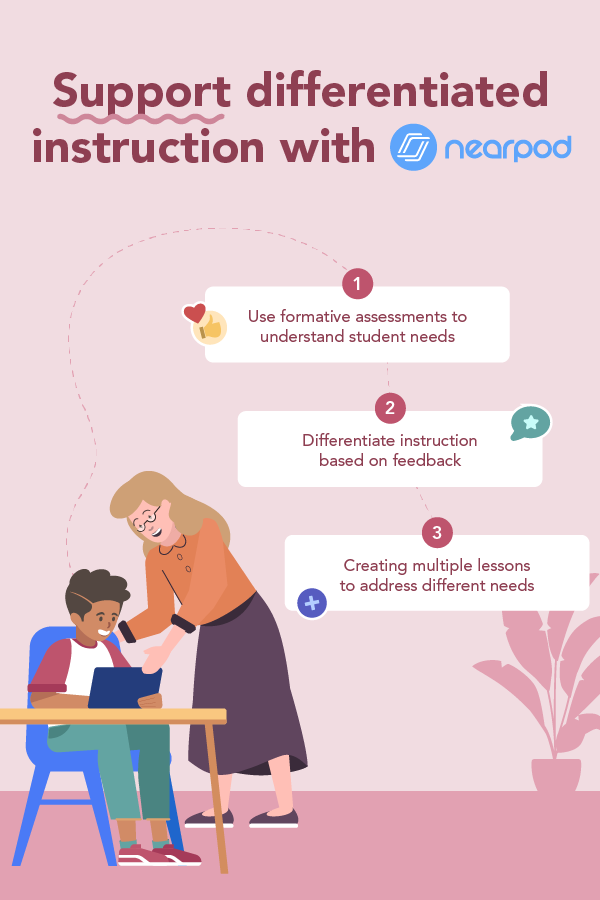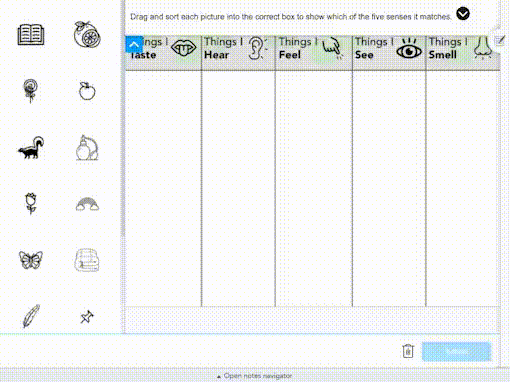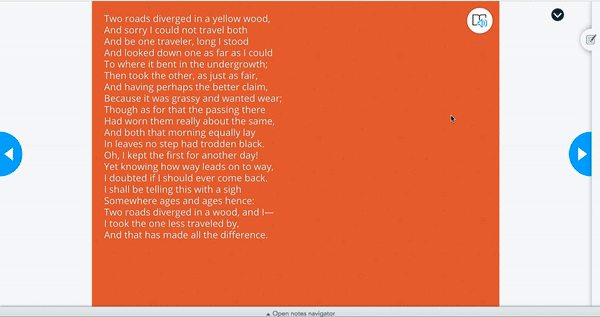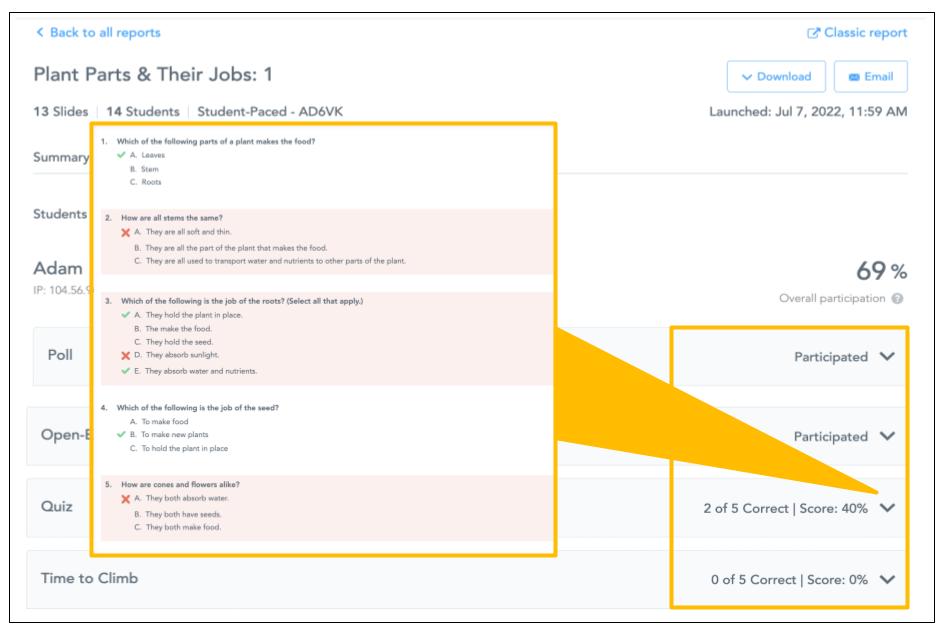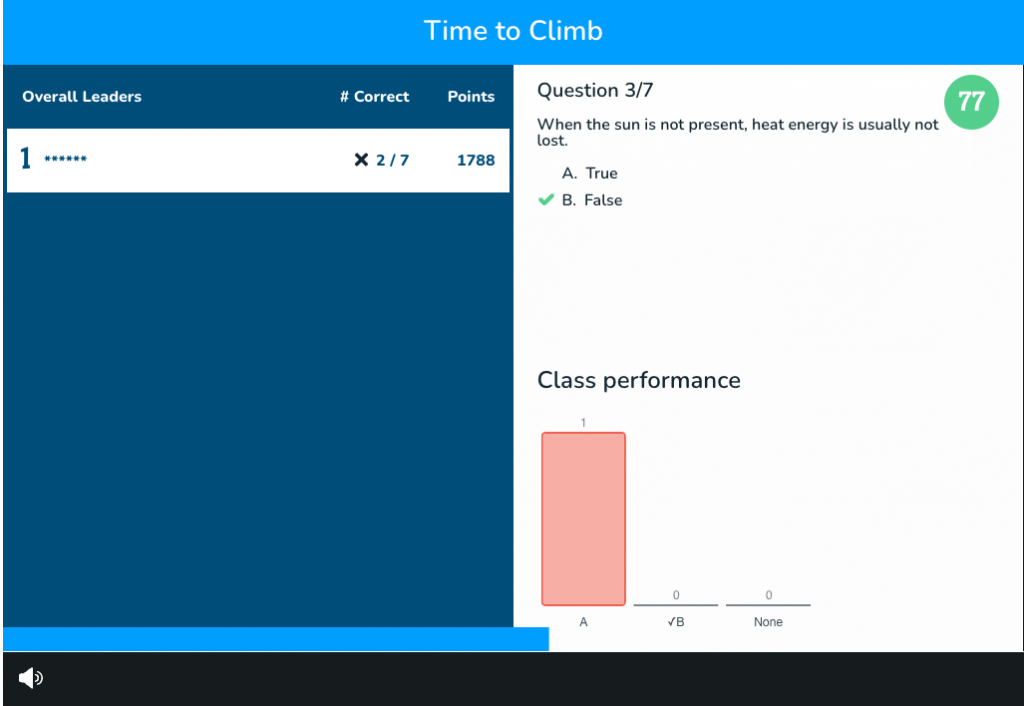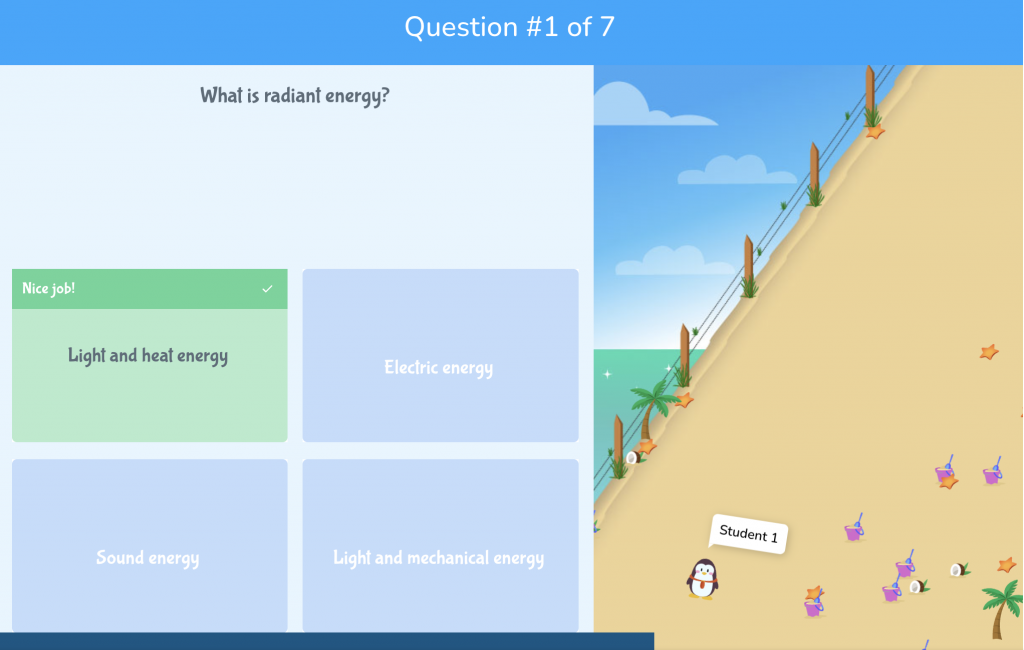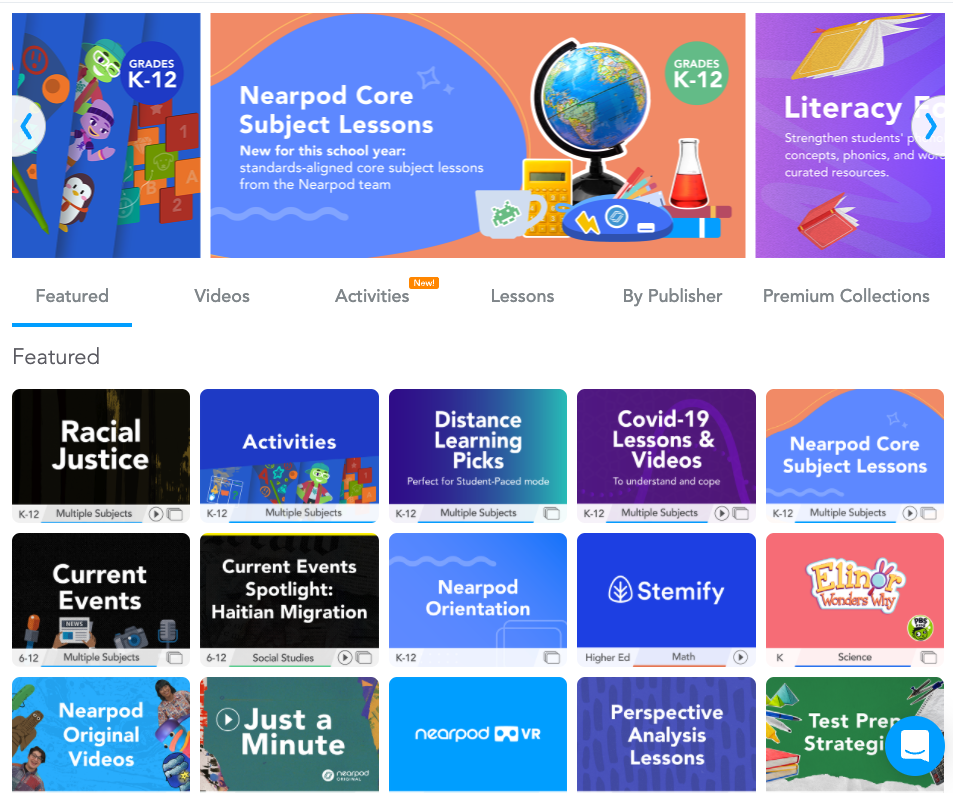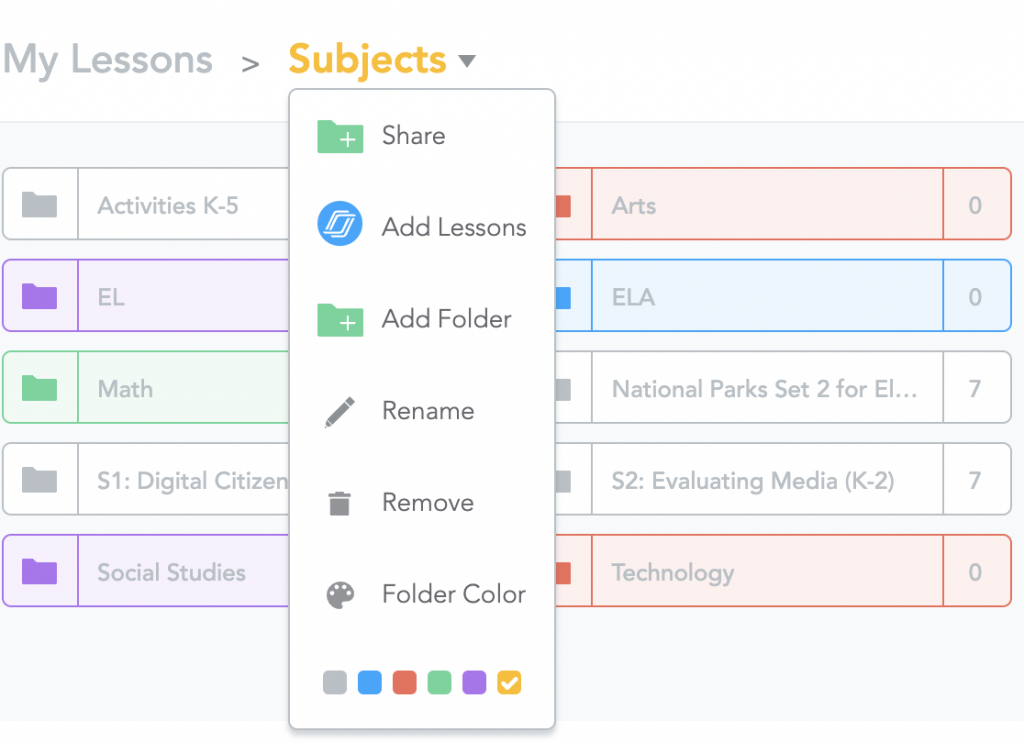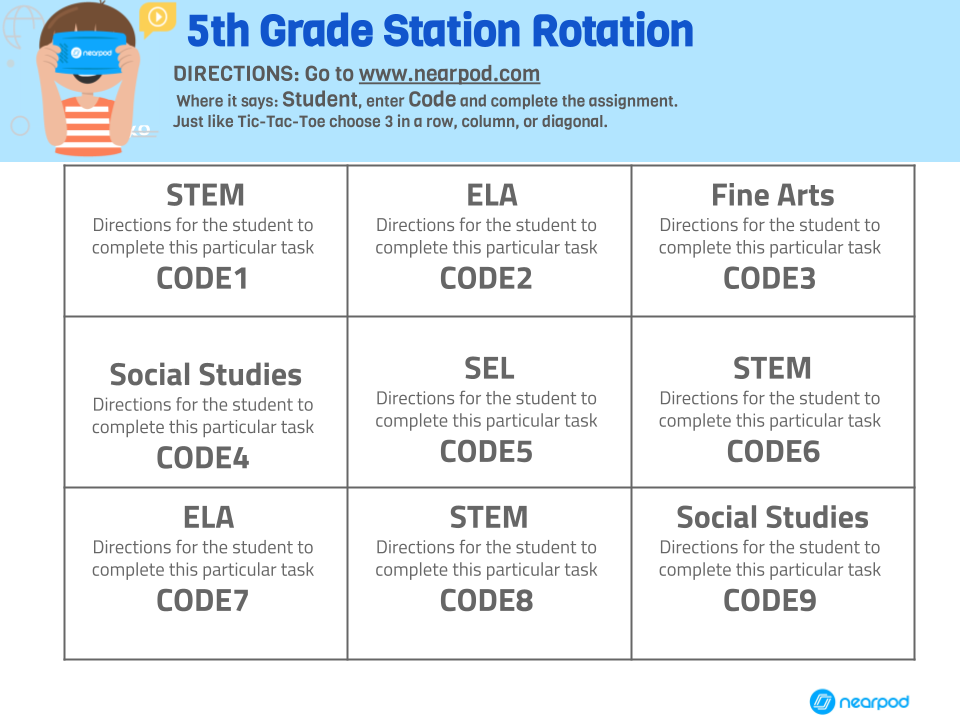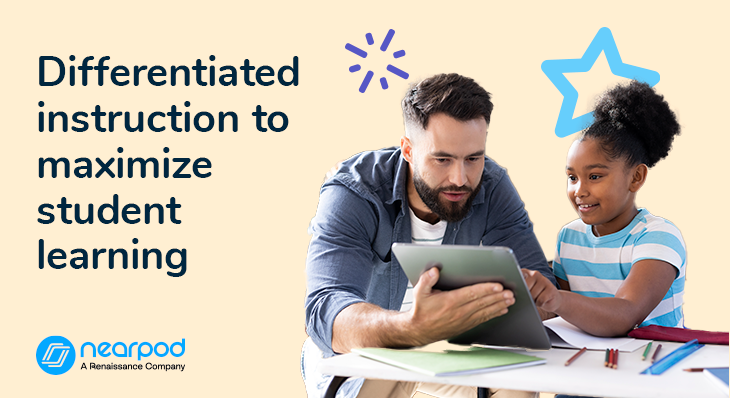
Differentiated instruction examples to maximize student learning
What is the importance of differentiated instruction?
Regardless of grade level, every classroom has students with different needs and ability levels. Differentiated instruction is important for students because it recognizes and supports their diverse learning needs and abilities, which can enhance their engagement, motivation, achievement, and overall well-being. Differentiated instruction examples can include using formative assessment to understand students’ needs, provide multiple learning options, and deliver personalized feedback.
Teaching to the “average” works for some students sometimes, but it is rarely enough to support every learner. Although differentiation has become an educational buzzword in the past few years, the idea behind the term is essential in today’s classrooms, especially post-pandemic.
In other words, instruction is based on the needs and preferences of each individual student within their learning environment. While that can certainly be difficult to achieve, it is important to note that a differentiated classroom can help increase both student engagement and achievement.
How to use differentiated instruction tools
Differentiated instruction tools are essential for meeting the diverse needs of students in today’s classrooms. These tools allow teachers to tailor learning experiences, ensuring that every student, regardless of their strengths or challenges, has access to the support they need. By using tools designed for differentiation, educators can adjust lesson content, teaching methods, and assessments to suit their students’ unique needs and paces.
Rather than applying a one-size-fits-all approach, these tools help teachers create personalized learning paths for each student—whether they’re high achievers, English language learners, or students with Individualized Education Plans (IEPs) or speech and language concerns. Tools for differentiation provide flexibility, making it easier to engage students in different ways and give them the opportunity to demonstrate their understanding. This is where tech tools, like Nearpod, can support.
Nearpod can help teachers differentiate instruction to meet the diverse needs of all learners within their classroom.
New to Nearpod? Teachers can sign up for free below to access these resources, interactive activities, and engaging lessons. Administrators can schedule a call with an expert to unlock the full power of Nearpod for schools and districts.
Differentiated instruction examples to maximize student learning
1. Use formative assessment to understand student needs
Nearpod’s formative assessment activities are effective for differentiating instruction. Teachers can send out formative assessment activities such as polls and quizzes, ask open-ended questions, have students submit drawing assessments through Draw It, and even write short notes on the Collaborate Board.
All of these features allow teachers to get instant insight into how their students are doing and address any questions or misconceptions.
When using Draw It, you can have students use a blank screen or add a background such as a graphic organizers to guide them. For example, Ann Feldmann at Edutopia describes how first-grade teacher Megan Cinfel uses the Draw It to collect formative feedback, which she later uses to differentiate her instruction:
“[She] gathers her students on the rug in a circle, sits with them, and presents new math concepts to all of their iPads simultaneously. She uses the draw feature daily to collect formative data. Students use the pen tool to draw responses and send them back. Teachers immediately see the data and can share student work back to their screens in just a click. This is a powerful way for students to see peer responses and explain their reasoning.”
The daily formative assessment data collected and compared to summative data can give teachers a better view of student mastery. Then, once teachers know where their students are, they can adjust to instruction moving forward and consider micro-intervention. This type of instant formative feedback can be beneficial for quickly understanding each student’s specific and varied needs.
Integrating interactive activities into your lessons can cast a wider net for all the unique gems in class. When lesson planning, here are some Nearpod formative assessment technology tools to use when considering students’ learning preferences:
- Slides and videos for visual and auditory learning
- Open-ended questions for deep thinking
- Draw It for artistic expression
- Time to Climb for competitive types
- Drag and Drop for hands-on learning
- Collaborate Board for social collaboration
- Polls for opinionated learners
- Matching Pairs for the ones who see patterns
- Fill-in-the Blanks for those who need context
- VR Field Trips for imaginative minds
2. Provide accessibility options for inclusivity
Differentiation helps encourage students to thrive by tailoring learning experiences to meet their unique needs for greater inclusivity in the classroom. Technology-based lessons give students better access to concepts than various traditional methods. Nearpod’s inclusivity features support multiple needs, such as:
- Immersive Reader: Enable Microsoft Immersive Reader to include accessibility functions such as text-to-speech, translation, contrast, voice speed, and font size, to name a few examples.
- Closed Caption: Always enable captions for videos. Videos in Nearpod provide closed captions for students to follow along with videos through subtitles if needed.
- Audio Functions: Enable audio responses as an assessment option to help students who prefer this method.
3. Gain insight from student assessments
With every lesson, you get instantaneous assessment feedback to guide and differentiate instruction. Using assessment data, teachers can also plan data-driven instruction for the whole class or small group to differentiate. After students complete Nearpod lessons, teachers can look into Post-session reports and use individual student data to guide the next lessons around student needs. Post-session reports can be organized by correct answers, student names, question types, percentages, and more.
During a Nearpod lesson, you can also toggle between the student and teacher views. The Teacher Dashboard shows you student responses in real time so you can address misconceptions in the moment. You can even use the Whiteboard feature to model for students!
Nearpod takes differentiated instruction examples for assessments one step further, allowing students to access and see their own reports. Conferencing with and guiding students in creating personal learning goals adds another layer to differentiation in teaching by making students accountable for their own individual learning. You and your students can work collaboratively to make a learning path specifically designed for their learning styles. This creates a norm within the classroom for every student to realize that learning is personal and subjective. Comparing yourself to other students should become a thing of the past.
4. Implement differentiated lessons in your instruction
Once teachers are aware of students’ individual needs based on the formative feedback they receive, they can begin tailored instruction based on those needs. Using differentiation instruction strategies such as flexible grouping and providing differentiated content allows teachers to engage learners at all levels. Incorporating student interests and utilizing differentiated instruction technology tools can make lessons more relevant and meaningful, fostering a deeper connection to the material.
Differentiating to individual needs can look incredibly different depending on the grade level, subject area, and student’s needs. But as Ben Johnson of Edutopia describes, “The ideal is to provide equivalent learning activities that cater to the students’ strengths but bring all of the students to the same learning objective.” In other words, teachers should support students on their journey toward the main learning objective of the lesson, but that support might look very different for each student or each group of students. Consider including Nearpod’s lesson library in your differentiated instruction tools.
Lesson Library
Preparing various levels of support on the fly can be difficult. That’s why it can be beneficial for teachers to prepare different lesson possibilities for students beforehand.
These lessons can be based on the different learning paths teachers expect their students to need, based on previous experience and their own expertise.
Nearpod’s quality lesson library has thousands of premade standards-aligned lessons, videos, and activities made by content experts and trusted educational publishers.
Lessons you download, create, or edit from Nearpod are immediately saved to your account for future use for years to come. You can organize folders of lessons based on small groups, skill levels, subjects, etc.
Here are three simple steps to keep your lessons organized by folder:
- Go to “My Lessons” and click on “+Folder”
- Type a name for the folder and click “Create”
- Drag any lesson you want into the folder!
5. Duplicate and edit lessons to address different needs
By preparing a variety of learning paths and differentiated instruction examples, teachers can ensure that whatever needs arise during the course of a lesson, they’ll be ready to meet them. If students need extra practice or remediation, have a Nearpod lesson prepared to share about the topic. If there are students who are ready to move on with additional real-world examples, teachers can have an assignment ready for them too.
By enabling Student-Paced mode, students can work through these lessons on their own or in small groups while the teacher provides individual support and guidance where needed. Easy to use, you can build regular lessons in Nearpod without worrying about pushing struggling learners too hard, while students who are ready to move quicker can continue unhindered. Students log in with a 5-digit code and work through a lesson at their own speed. They have time to work through problems and process answers truly while not feeling rushed or “left behind” for not moving quickly.
In addition to allowing for differentiation, preparing multiple lesson possibilities also means that students can have a choice in the direction their learning takes. Provide students with a choice board that includes various Nearpod lesson codes, or other assignment options, with a description of the objective. This combination of student voice, choice, and differentiation opens up powerful possibilities In addition to allowing for differentiation, preparing multiple lesson possibilities also means that students can have a choice in the direction their learning takes. Provide students with a choice board that includes various Nearpod lesson codes, or other assignment options, with a description of the objective. This combination of student voice, choice, and differentiation opens up powerful possibilities at all grade levels during the learning process at all grade levels.
Start differentiating instruction in your classroom
We’re so excited to see you use these differentiated learning examples! Differentiation becomes second nature in a classroom with the right resources at your disposal. Everyone learns differently, which means teachers need the necessary resources to reach and make an impact on every student inside the classroom. Nearpod’s interactive formative assessments and lessons make learning accessible to all learners in the classroom.
New to Nearpod? Teachers can sign up for free below to access these resources, interactive activities, and engaging lessons. Administrators can schedule a call with an expert to unlock the full power of Nearpod for schools and districts.
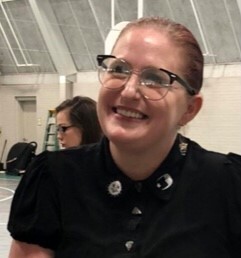
Angelia Simpson has been a first grade teacher for nine years. With a classroom full of minions, she balances the wonderful line of chaos and learning. Passions include writing, technology, reading, and Corgis.
